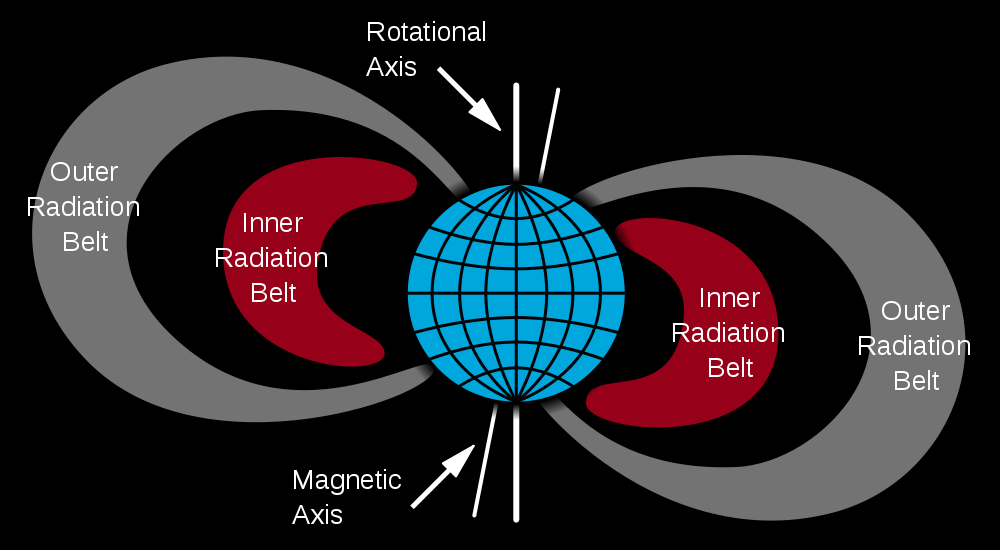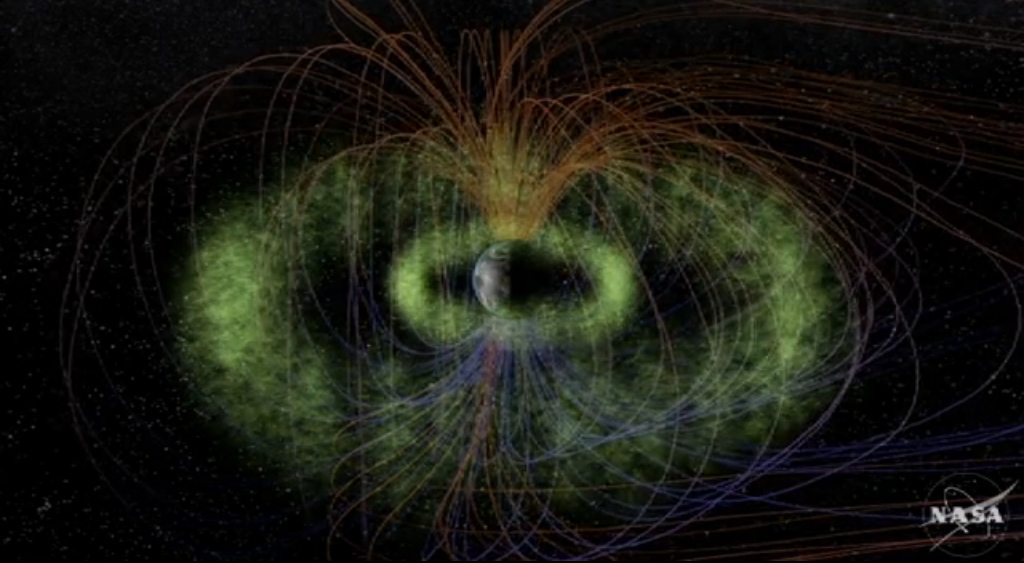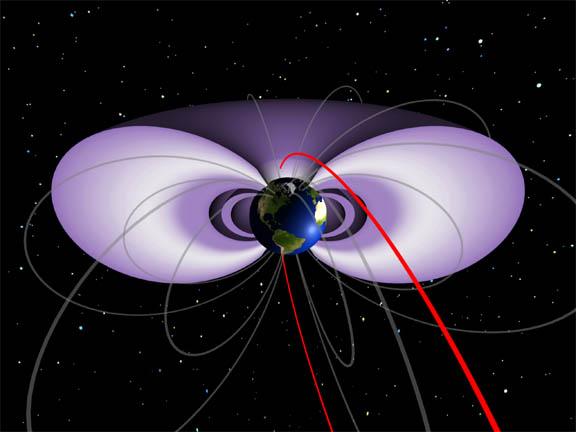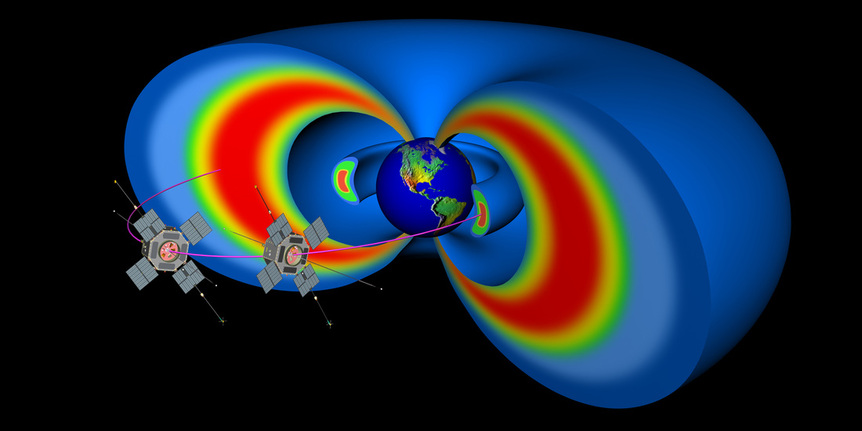Science Overview

The Van Allen Belts are tori of energetic charged particles around Earth (donut-shaped regions) which are held in place by Earth’s magnetic field. Particles present in the Radiation belts are believed to originate in solar winds and cosmic rays. Major Van Allen Belt particles include electrons, protons and ions of Hydrogen, Helium and Oxygen. The belts are named after their discoverer, James Van Allen who confirmed their existence in 1958 by using data returned by the Explorer 1 and 3 Spacecraft. The term Van Allen Belts specifically refers to Earth’s radiation belts, but since the discovery of Earth’s Radiation Belts, scientists have explored other plants and their radiation environments and have found that other planets feature similar belts, too.
Earth’s radiation belts consist of an inner belt that features a combination of electrons and protons, and an outer belt that contains high-energy electrons.
Earth’s radiation belts also feature ions and alpha particles. Due to the elevated radiation levels in the belts, satellites, spacecraft and astronauts can be harmed when staying in this harsh environment for an extended amount of time.

Earth’s outer radiation belt extends from about 13,000 to 60,000 Kilometers above Earth’s surface. It features its greatest intensity at four to five Earth Radii. The outer belt mainly consists of highly energized electrons with energies of 0.1 to 10MeV that are trapped by Earth’s Magnetosphere. Also trapped inside the outer belt are ions mostly in the form of high-energy protons. The outer belt also includes Alpha Particles and oxygen ions that have a much greater energy than the oxygen ions of the ionosphere of Earth. The composition of the outer belt is highly varied and depends on a variety of space-weather related events which the respond to; however, the characteristics of these responses are not fully understood. Energetic particle fluxes vary dramatically as a consequence of geomagnetic storms, which are triggered by magnetic field and plasma disturbances produced by the Sun. The outer belt is much larger than the inner belt. The Outer Van Allen Belt, especially its high-energy electrons, is the result of particles being injected from the geomagnetic tail following geomagnetic storms with subsequent energization through wave-particle interactions.

The Inner Van Allen Belts extends from 1.2 to 3 Earth Radii. In cases of strong solar activity or geographical areas such as the South Atlantic Anomaly, the inner belt can penetrate the atmosphere with its inner boundary going down to 200 Kilometers or less. The inner belt contains an abundance of electrons with energies of several hundred keV as well es energetic electrons and protons with energies greater than 100MeV that are trapped by the magnetic fields present in these regions. High energy protons can penetrate shielding and cause damage on spacecraft and harm astronauts. Inner belt particles are the result of the decay of albedo neutrons which themselves are the created in cosmic ray collisions in the upper atmosphere. The inner belt is more stable in its composition than the outer belt that is constantly changing.
The constant variability of the radiation belts which is of most interest to scientists. Some phenomena that cause fluctuations of the radiation belts are fairly well known, but the response to certain drivers is not always the same. During magnetic storms, the belts can behave erratically, new belts can be created temporarily and localized fluctuations can occur.
The physical processes involved in the enhancement and decay of the belts and in the formation of new ones are generally unknown and will be examined by the RBSP mission.
Also, Space Weather has become an important issue for space and Earth applications since the effect Solar Wind and particularly large Coronal Mass Ejections have on Earth are adverse and affect a variety of technological applications. Monitoring Solar Activity and CMEs, and forecasting these events by using different spacecraft has become a common practice, but forecasting the response of Geospace (near-Earth Space including the Van Allen Belts) is nearly impossible with the current insight in the physical processes that are responsible for these responses. Understanding these processes is an important step to producing forecasting models for Geospace Responses to Space Weather Related Drivers.

RBSP will answer the following questions:
- Which physical processes produce radiation belt enhancements?
- What are the dominant mechanisms for high-energy electron loss?
- What factors affect radiation belt dynamics?
The RBSP Mission is a dual-spacecraft study that allows the comparison of observations from both spacecraft which enables scientists to distinguish between events that occur simultaneously throughout the Van Allen Belts, those that happen in only a single area in space, and those that move from one point to another as time progresses. This will further expand out knowledge of the physical processes that occur in the belts and in space in general.
